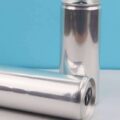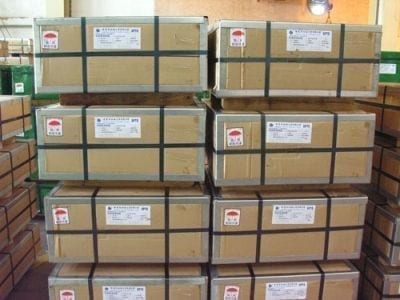Stackable paint cans are an innovative solution that allows for more efficient storage and transportation. These cans are designed in such a way that they can be stacked on top of each other, which saves space and facilitates handling.
The evolution of stackable paint cans has been a real breakthrough in the industry. These containers have undergone a remarkable transformation over time, with the aim of bringing more convenience and efficiency to both manufacturers and consumers.
In the beginning, paint cans were simply cylindrical and did not allow for easy storage. In conclusion, the constant evolution in stackable paint cans has brought numerous benefits for both manufacturers and consumers: greater logistical efficiency, better use of space, safety in transport.
Stackable paint cans have a fascinating history going back decades. In the past, conventional cans were bulky and difficult to handle. Its design did not allow for efficient storage and transportation in large quantities. This posed a challenge to the paint industry, as it limited its production and distribution capacity.
However, as time went by, manufacturers began to look for innovative solutions to optimize this situation. This is how the first stackable cans were born: a revolutionary design that saved space both in warehouses and during transportation.
These new cans were conical and stackable, which made it much easier to stack them on top of each other without wasting space. In addition, ergonomic handles were incorporated to improve handling and safe transfer of the products.
With the initial success of these stackable cans, manufacturers continued to experiment with new, lighter but equally strong and safe materials. Thus was born a new generation of smart packaging that provided greater durability against accidental bumps or drops.
One company that offers this type of cans is Envases Group. They have developed a stackable paint can to meet retail demand. They offer a variety of options, including plastic paint cans with lids, which are rust, odor and chemical resistant.
First of all, stackable cans optimize space in warehouses and on shelves. Thanks to their compact design and ability to be stacked on top of each other, they maximize the utilization of available space. This allows a better use of the area and facilitates the organization of the inventory.
Cleanup: Before stacking paint cans, make sure they are clean and dry. Any paint on the outside of the can may cause the cans to stick together.
Lids tightly closed: Make sure paint can lids are tightly closed to prevent spills. You can seal the lid with a block of wood and a hammer.
Stacking: When stacking paint cans, place heavier cans on the bottom and lighter cans on top. Do not stack cans too high to prevent them from falling.
Storage: Store paint cans in a cool, dry place to prevent oxidation and deterioration of the paint.
In addition, these cans are easier to transport for both suppliers and end consumers. Its cylindrical shape with an airtight lid prevents accidental spills during transport, which is especially important when dealing with chemicals or flammable liquids.
Another outstanding benefit is its durability. Stackable cans are made of resistant materials that protect the contents against knocks or falls. This considerably reduces the risk of product waste due to packaging damage.
Last but not least, these cans are environmentally friendly thanks to their ability to be easily recycled. By choosing sustainable packaging such as this type of stackable can, we actively contribute to reducing our ecological footprint and promoting a greener future.
In addition, Envases Group is a worldwide supplier of quality packaging. Its main objective is to generate value for its shareholders, customers, suppliers and collaborators by providing the best sustainable packaging solutions, always with a positive effect on the environment and the communities in which they are present.
Envases Group also has two modern production facilities in Europe that offer expertise, innovation and in-house developed tools and are fully equipped to handle your packaging requirements. Customers with well-known brands rely on its highly reactive and reliable service.
The innovation in stackable paint cans has opened up a world of possibilities for the industry. As technology advances, we are likely to see even more improvements and additional features in these practical and versatile cans.
A possible future development could be the incorporation of smart sensors in can lids. These sensors could monitor the level of paint remaining, providing accurate information on how much product is left before having to purchase a new can. This would help avoid inconveniences during projects and allow for more efficient inventory management.
In addition, future cans are expected to be even stronger and more durable. Manufacturers are researching advanced materials that not only better protect the contents, but are also environmentally friendly. Cans that are biodegradable or made from recycled materials could become the norm as sustainability awareness increases.














